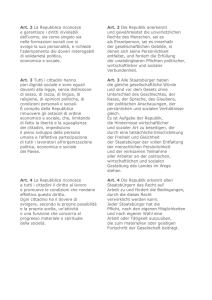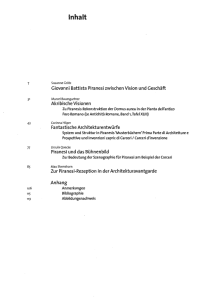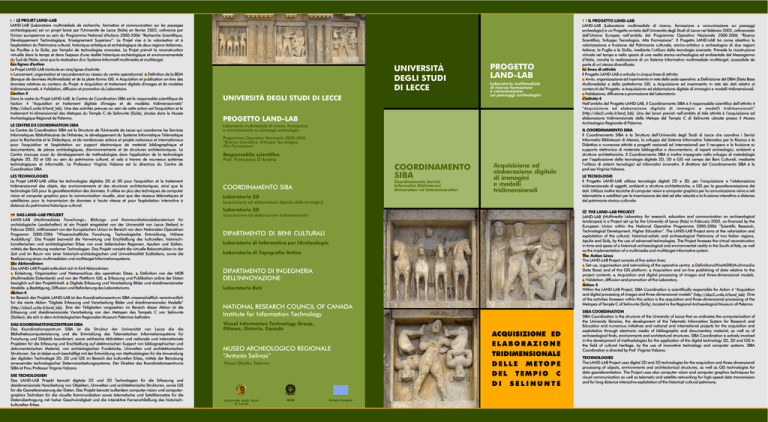
LE PROJET LAND-LAB
LAND-LAB (Laboratoire multimédiale de recherche, formation et communication sur les paysages
archéologiques) est un projet lancé par l'Université de Lecce (Italie) en février 2003, cofinancé par
l'Union européenne au sein du Programme National d'Actions 2000-2006 “Recherche Scientifique,
Développement Technologique, Enseignement Supérieur”. Le Projet vise à la valorisation et à
l'exploitation du Patrimoine culturel, historique-artistique et archéologique de deux régions italiennes,
les Pouilles e la Sicile, par l'emploi de technologies avancées. Le Projet prévoit la reconstruction
virtuelle dans le temps et dans l'espace d'une réalité historique-archéologique et environnementale
du Sud de l'Italie, ainsi que la réalisation d'un Système Informatif multimédia et multitarget.
Les lignes d'action
Le Projet LAND-LAB s'articule en cinq lignes d'activité:
1. Lancement, organisation et raccordement au réseau du centre opérationnel. 2. Définition de la BDM
(Banque de données Multimédiale) et de la plate-forme GIS. 3. Acquisition et publication on-line des
données relatives au contenu du Projet. 4. Acquisition et traitement digitale d'images et de modèles
tridimensionnels. 5. Validation, diffusion et promotion du Laboratoire.
L'action 4
Dans le cadre du Projet LAND-LAB, le Centre de Coordination SIBA est le responsable scientifique de
l'action 4 “Acquisition et traitement digitale d'images et de modèles tridimensionnels”
(http://siba3.unile.it/land_lab). Une des activités prévues au sein de cette action est l'acquisition et le
traitement tri-dimensionnel des Métopes du Temple C de Selinunte (Sicile), situées dans le Musée
Archéologique Régional de Palermo.
LE CENTRE D E COORDINATION SIBA
Le Centre de Coordination SIBA est la Structure de l'Université de Lecce qui coordonne les Services
Informatiques Bibliothécaires de l'Athénée, le développement du Système Informatique Télématique
pour la Recherche et la Didactique, et de nombreuses actions et projets nationaux et internationaux
pour l'acquisition et l'exploitation sur support électronique de matériel bibliographique et
documentaire, de pièces archéologiques, d'environnements et de structures architectoniques. Le
Centre s'occupe aussi du développement de méthodologies dans l'application de la technologie
digitale 2D, 3D et GIS au sein du patrimoine culturel, et cela à travers de nouveaux systèmes
technologiques et informatifs. Le Professeur Virginia Valzano est la directrice du Centre de
Coordination SIBA.
LES TECHNOLOGIES
Le Projet LAND-LAB utilise les technologies digitales 2D et 3D pour l'acquisition et le traitement
tridimensionnel des objets, des environnements et des structures architectoniques, ainsi que la
technologie GIS pour la géoréférentiation des données. Il utilise en plus des techniques de computer
vision et computer graphics pour la communication visuelle, ainsi que des réseaux télématiques et
satellitaires pour la transmission de données à haute vitesse et pour l'exploitation interactive à
distance du patrimoine historique-culturel.
DAS LAND-LAB PROJEKT
LAND-LAB (Multimediales Forschungs-, Bildungs- und Kommunikationslaboratorium für
archäologische Landschaften) ist ein Projekt eingeleitet von der Universität von Lecce (Italien) in
Februar 2003, mitfinanziert von der Europäischen Union im Bereich von dem Nationalen Operativen
Programm 2000-2006 “Wissenschaftliche Forschung, Technologische Entwicklung, Höhere
Ausbildung”. Das Projekt bezweckt die Verwertung und Erschließung des kulturellen, historischkünstlerischen und archäologischen Erbes von zwei italienischen Regionen, Apulien und Sizilien,
mittels der Benutzung moderner Technologien. Das Projekt vorsieht die virtuelle Rekonstruktion in der
Zeit und im Raum von einer historisch-archäologischen und Umweltrealität Süditaliens, sowie die
Realisierung eines multimedialen und multitarget Informationssystems.
Die Aktionslinien
Das LAND-LAB Projekt artikuliert sich in fünf Aktionslinien:
1. Einleitung, Organisation und Netzanschluss des operativen Sitzes. 2. Definition von der MDB
(Multimediale Datenbank) und von der Plattform GIS. 3. Erfassung und Publikation online der Daten
bezüglich auf den Projektinhalt. 4. Digitale Erfassung und Verarbeitung Bilder und dreidimensionaler
Modelle. 5. Bestätigung, Diffusion und Beförderung des Laboratoriums.
Aktion 4
Im Bereich des Projekts LAND-LAB ist das Koordinationszentrum SIBA wissenschaftlich verantwortlich
für die vierte Aktion “Digitale Erfassung und Verarbeitung Bilder und dreidimensionaler Modelle”
(http://siba3.unile.it/land_lab). Eine der Tätigkeiten vorgesehen im Bereich dieser Aktion ist die
Erfassung und dreidimensionale Verarbeitung von den Metopen des Tempels C von Selinunte
(Sizilien), die sich in dem Archäologischen Regionalen Museum Palermos befinden.
DAS KOORDINATIONSZENTRUM SIBA
Das Koordinationszentrum SIBA ist die Struktur der Universität von Lecce die die
Bibliothekscomputerisierung und die Entwicklung des Telematischen Informationssystems für
Forschung und Didaktik koordiniert, sowie zahlreiche Aktivitäten und nationale und internationale
Projekten für die Erfassung und Erschließung auf elektronischen Support von bibliographischen und
dokumentarischen Material, von archäologischen Fundstücke, Umwelten und architektonischen
Strukturen. Sie ist dabei auch beschäftigt mit der Entwicklung von Methodologien für die Anwendung
der digitalen Technologie 2D, 3D und GIS im Bereich des kulturellen Erbes, mittels der Benutzung
erneuernder technologischer Datenverarbeitungssysteme. Der Direktor des Koordinationszentrums
SIBA ist Frau Professor Virginia Valzano.
DIE TECNOLOGIEN
Das LAND-LAB Projekt benutzt digitale 2D und 3D Technologien für die Erfassung und
dreidimensionale Verarbeitung von Objekten, Umwelten und architektonische Strukturen, sowie GIS
für die Georeferenzierung der Daten. Das Projekt benutzt außerdem computer-vision und computergraphics Techniken für die visuelle Kommunikation sowie telematische und Satellitennetze für die
Datenübertragung mit hoher Geschwindigkeit und die interaktive Fernerschließung des historischkulturellen Erbes.
UNIVERSITÀ
DEGLI STUDI
DI LECCE
UNIVERSITÀ DEGLI STUDI DI LECCE
PROGETTO
LAND-LAB
Laboratorio multimediale
di ricerca formazione
e comunicazione
sui paesaggi archeologici
PROGETTO LAND-LAB
Laboratorio multimediale di ricerca, formazione
(acquisizione ed elaborazione tridimensionali)
e comunicazione sui paesaggi archeologici
Programma Operativo Nazionale 2000-2006
“Ricerca Scientifica, Sviluppo Tecnologico,
Alta Formazione”
Responsabile scientifico
Prof. Francesco D’Andria
COORDINAMENTO
SIBA
Coordinamento Servizi
Informatici Bibliotecari
Universitari ed Interuniversitari
COORDINAMENTO SIBA
Acquisizione ed
elaborazione digitale
di immagini
e modelli
tridimensionali
Laboratorio 2D
(acquisizione ed elaborazione digitale delle immagini)
Laboratorio 3D
INSTITUTE FOR INFORMATION TECHNOLOGY
DIPARTIMENTO DI BENI CULTURALI
Laboratorio di Informatica per l'Archeologia
Laboratorio di Topografia Antica
DIPARTIMENTO DI INGEGNERIA
DELL'INNOVAZIONE
Laboratorio Reti
NATIONAL RESEARCH COUNCIL OF CANADA
Institute for Information Technology
MUSEO ARCHEOLOGICO REGIONALE
“Antonio Salinas”
Piazza Olivella, Palermo
Università degli Studi
di Lecce
MIUR
Unione Europea
IL COORDINAMENTO SIBA
Il Coordinamento SIBA è la Struttura dell’Università degli Studi di Lecce che coordina i Servizi
Informatici Bibliotecari di Ateneo, lo sviluppo del Sistema Informativo Telematico per la Ricerca e la
Didattica e numerose attività e progetti nazionali ed internazionali per il recupero e la fruizione su
supporto elettronico di materiale bibliografico e documentario, di reperti archeologici, ambienti e
strutture architettoniche. Il Coordinamento SIBA è inoltre impegnato nello sviluppo di metodologie
per l’applicazione della tecnologia digitale 2D, 3D e GIS nel campo dei Beni Culturali, mediante
l’utilizzo di sistemi tecnologici ed informatici innovativi. Il direttore del Coordinamento SIBA è la
prof.ssa Virginia Valzano.
LE TECNOLOGIE
Il Progetto LAND-LAB utilizza tecnologie digitali 2D e 3D, per l’acquisizione e l’elaborazione
tridimensionale di oggetti, ambienti e strutture architettoniche, e GIS per la georeferenziazione dei
dati. Utilizza inoltre tecniche di computer vision e computer graphics per la comunicazione visiva e reti
telematiche e satellitari per la trasmissione dei dati ad alta velocità e la fruizione interattiva a distanza
del patrimonio storico-culturale.
THE LAND-LAB PROJECT
LAND-LAB (Multimedia Laboratory for research, education and communication on archaeological
landscapes) is a Project set up by the University of Lecce (Italy) in February 2003, co-financed by the
European Union within the National Operative Programme 2000-2006 “Scientific Research,
Technological Development, Higher Education”. The LAND-LAB Project aims at the valorisation and
exploitation of the cultural, historical-artistic and archaeological Patrimony of two Italian regions,
Apulia and Sicily, by the use of advanced technologies. The Project foresees the virtual reconstruction
in time and space of a historical-archaeological and environmental reality in the South of Italy, as well
as the implementation of a multimedia and multitarget informative system.
The Action Lines
The LAND-LAB Project consists of five action lines:
1. Set-up, organisation and networking of the operative centre. 2. DefinitionoftheMDB(Multimedia
Data Base) and of the GIS platform. 3. Acquisition and on-line publishing of data relative to the
project contents. 4. Acquisition and digital processing of images and three-dimensional models.
5. Validation, diffusion and promotion of the Laboratory.
Action 4
Within the LAND-LAB Project, SIBA Coordination is scientifically responsible for Action 4 “Acquisition
and digital processing of images and three-dimensional models” (http://siba3.unile.it/land_lab). One
of the activities foreseen within this action is the acquisition and three-dimensional processing of the
Metopes of Temple C of Selinunte (Sicily), located in the Regional Archaeological Museum of Palermo.
(acquisizione ed elaborazione tridimensionali)
Visual Information Technology Group,
Ottawa, Ontario, Canada
IL PROGETTO LAND-LAB
LAND-LAB (Laboratorio multimediale di ricerca, formazione e comunicazione sui paesaggi
archeologici) è un Progetto avviato dall’Università degli Studi di Lecce nel febbraio 2003, cofinanziato
dall’Unione Europea nell’ambito del Programma Operativo Nazionale 2000-2006 “Ricerca
Scientifica, Sviluppo Tecnologico, Alta Formazione”. Il Progetto LAND-LAB ha come obiettivo la
valorizzazione e fruizione del Patrimonio culturale, storico-artistico e archeologico di due regioni
italiane, la Puglia e la Sicilia, mediante l’utilizzo delle tecnologie avanzate. Prevede la ricostruzione
virtuale nel tempo e nello spazio di una realtà storico-archeologica ed ambientale del Mezzogiorno
d’Italia, nonché la realizzazione di un Sistema Informativo multimediale multitarget, accessibile da
parte di un’utenza diversificata.
Le linee di attività
Il Progetto LAND-LAB si articola in cinque linee di attività:
1. Avvio, organizzazione ed inserimento in rete della sede operativa. 2. Definizione del DBM (Data Base
Multimediale) e della piattaforma GIS. 3. Acquisizione ed inserimento in rete dei dati relativi ai
contenuti del Progetto. 4. Acquisizione ed elaborazione digitale di immagini e modelli tridimensionali.
5. Validazione, diffusione e promozione del Laboratorio.
L’attività 4
Nell’ambito del Progetto LAND-LAB, il Coordinamento SIBA è il responsabile scientifico dell’attività 4
“Acquisizione ed elaborazione digitale di immagini e modelli tridimensionali”
(http://siba3.unile.it/land_lab). Uno dei lavori previsti nell’ambito di tale attività è l’acquisizione ed
elaborazione tridimensionale delle Metope del Tempio C di Selinunte ubicate presso il Museo
Archeologico Regionale di Palermo.
ACQUISIZIONE ED
ELABORAZIONE
TRIDIMENSIONALE
DELLE METOPE
DEL TEMPIO C
DI SELINUNTE
SIBA COORDINATION
SIBA Coordination is the structure of the University of Lecce that co-ordinates the computerization of
the University libraries, the development of the Telematic Information System for Research and
Education and numerous initiatives and national and international projects for the acquisition and
exploitation through electronic media of bibliographic and documentary material, as well as of
archaeological finds, environments and architectural structures. SIBA Coordination is actively involved
in the development of methodologies for the application of the digital technology 2D, 3D and GIS in
the field of cultural heritage, by the use of innovative technology and computer systems. SIBA
Coordination is directed by Prof. Virginia Valzano.
TECHNOLOGIES
The LAND-LAB Project uses digital 2D and 3D technologies for the acquisition and three-dimensional
processing of objects, environments and architectonical structures, as well as GIS technologies for
data georeferentiation. The Project uses also computer vision and computer graphics techniques for
visual communication as well as telematic and satellite networking for high-speed data transmission
and for long distance interactive exploitation of the historical-cultural patrimony.
1
2
3
2
1
Acquisition and three-dimensional processing of the
Metopes of Temple C of Selinunte (Sicily)
Acquisition et traitement tri-dimensionel des Métopes du
Temple C de Selinunte (Sicile)
Erfassung und dreidimensionale Verarbeitung von den Metopen
des Tempels C von Selinunte (Sizilien)
Direzione tecnico-scientifica dei lavori:
Prof.ssa Virginia Valzano, Ing. J.- A . Beraldin,Dott.ssa Adriana Bandiera
Technical-scientific Direction:
Prof. Virginia Valzano, Dr. Eng. J.- A. Beraldin, Dr. Adriana Bandiera
Direction technique-scientifique des travaux:
Le Prof. Virginia Valzano, Dr. Ing. J.- A.Beraldin, Dr. Adriana Bandiera
Technisch-wissenschaftliche Leitung:
Frau Prof. Virginia Valzano, Dr. Ing. J.- A. Beraldin, Dr. Adriana Bandiera
Il sistema utilizzato misura la forma degli oggetti mediante una
procedura accurata di scansione laser. Ogni 4 millesimi di secondo la
linea laser acquisisce 640 coordinate tridimensionali (3D).
Un'immagine completa è ottenuta quando la linea laser scandisce
una sequenza sull'intera superficie. Per ogni immagine 3D vengono
acquisite 480 linee. Una singola immagine contiene più di 307.200
coordinate (x, y, z), acquisite in un arco di tempo di 2.5 secondi.
The present system measures the shape of objects using an
accurate laser scanning procedure. Each four thousandth of a
second, the laser line acquires 640 three-dimensional (3D)
coordinates. A complete image is obtained by scanning the laser
line in a sequence over the whole surface. A total of 480 lines is
obtained per 3D image. More than 307 200 (x,y,z) coordinates are
measured in a single 3D image with a time frame of 2.5 seconds.
Le système utilisé mesure la forme des objets en utilisant une
procédure précise de balayage laser. A chaque quatre millième
de seconde, la ligne laser saisit 640 coordonnées
tridimensionnelles (3D). On obtient une image 3D grâce au
balayage d'une suite de 480 lignes laser sur toute la surface. Plus
de 307 200 coordonnées (x,y,z) sont mesurées par image 3D,
pour une durée de 2.5 secondes.
Das derzeitige System dient dafür Objektformen zu vermessen mit
der Verwendung einer genauen Prozedur von Laserscanning.
Jedes viertausendste einer Sekunde erwerbt die Laserlinie 640
dreidimensionale (3D) Koordinaten. Ein vollständiges Bild
bekommt man durch eine Scanningsequenz von 480 Laserlinien
über die ganze Oberfläche. Mehr als 307 200 (x,y,z) Koordinaten
werden vermessen für ein einziges 3D Bild, erwerbt in einer
Zeitspanne von 2.5 Sekunden .
Vista schematica della linea laser proiettata sulla
superficie dellaGorgone.
1
Le coordinate 3D visualizzate come nuvola di punti. All'interno
della griglia, ogni punto è situato ad una distanza di ca. 0.25 mm
dai punti adiacenti.
2
La rappresentazione mesh consente di visualizzare in forma di
triangoli la connessione tra punti in un'immagine 3D. Più
numerosi sono i triangoli, migliore è la qualità dell'immagine 3D.
4
4
5
6
7
8
7
6
Acquisizione ed elaborazione tridimensionale delle
Metope del Tempio C di Selinunte (Sicilia)
3
3
5
4
Una volta che le coordinate 3D sono immagazzinate nella
memoria del computer, strumenti di computer grafica consentono
di visualizzare i risultati utilizzando tecniche di ombreggiatura
sintetica. Tali tecniche consentono di visualizzare i dettagli della
superficie dellaGorgone.
Al fine di rappresentare la superficie in un modo più realistico, una
texture (un'immagine fotografica) viene applicata sulla superficie
3D.
Si ottiene un modello 3D completo quando più immagini 3D
vengono acquisite e fuse a formare una superficie senza segni di
giuntura. In questa figura ogni immagine 3D è visualizzata con un
colore diverso.
Modello 3D parziale della Gorgone visualizzato mediante
ombreggiatura sintetica.
La mappatura della texture dona un aspetto più realistico al
modello 3D della Gorgone.
Schematic view of the laser line projected onto the surface of the
Gorgone.
1
The 3D coordinates appear as a point cloud. Each point in this grid
is located at a distance of about 0.25 mm from its adjacent points.
2
A mesh representation allows us to view the connection between
the points in a 3D image as triangles. Indeed, the more triangles
there are, the better the 3D image quality will be.
Once the 3D coordinates are stored in the computer memory,
computer graphics tools allow us to view the results using synthetic
shading. This viewing technique allows us to study surface details
of theGorgone.
5
In order to represent the surface in a more natural way, a texture
(photographic image) is applied onto the 3D surface.
6
A complete 3D model is obtained when multiple overlapping 3D
images are acquired and fused together to form a seamless
surface. This image shows these 3D images using a different
colour.
3
4
5
7
The partial 3D model of the Gorgone is shown using synthetic
shading.
8
Texture mapping allows for a naturally looking 3D model of the
Gorgone.
6
Une vue schématique de la ligne laser projetée sur la surface de la
Gorgone.
1
Schematisches Ansicht von der Laserlinie, projektiert auf die
Oberfläche der Gorgo.
Les coordonnées 3D apparaissent comme un nuage de points.
Chaque point dans cette grille est séparé d’une distance d'environ
0.25 mmdesespointsadjacents.
2
Die 3D Koordinaten zeigen sich wie ein Punktenschwarm. Jedes
Punkt in dieses Gitter ist lokalisiert in einem 0.25 mm Distanz von
den angrenzenden Punkten.
Une représentation en fil de fer de l'image 3D nous permet de voir
l’interconnexion entre les points sous forme de triangles. En effet,
plus il y a de triangles plus l'image 3D sera de qualité.
3
Une fois les coordonnées 3D emmagasinées dans la mémoire de
l'ordinateur, un logiciel graphique nous permet de visualiser les
résultats en utilisant un éclairage synthétique. Cette technique de
visualisation nous permet ainsi d'observer les détails de la surface
de laGorgone.
Eine netzförmige Darstellung stellt uns in der Lage die Verbindung
zwischen die Punkte in ein 3D Bild wie Dreiecke zu sehen. In der
Tat, wie mehr Dreiecke es gibt, wie besser die 3D Bildqualität sein
wird.
4
Wenn einmal die 3D Koordinaten ins Computer gespeichert sind,
erlauben Computergraphikprogramme die Ergebnisse
wahrnehmbar zu machen durch Verwendung einer synthetischen
Abtönung. Diese Visualisierungstechnik stellt uns in der Lage die
Oberflächedetails der Gorgo wahr zu nehmen.
5
Um die Oberfläche in eine mehr natürliche Weise dar zu stellen
wird eine Textur (ein photographisches Bild) aufgetragen auf die
3D Oberfläche.
6
E i n vollständiges 3D M o d e l l bekommt man w e n n
dreidimensionale Bilder in mehrfache Überlagerung erwerbt und
zusammengebracht werden in eine nahtlose Oberfläche. Diese
Figur zeigt diese 3D Bilder in verschiedene Farben.
7
Das partielle Modell der Gorgo wird dargestellt mit Verwendung
einer synthetischen Abtönung.
8
Die Texturauftragung (mapping) erlaubt ein mehr natürliches 3D
Modell der Gorgo.
Pour pouvoir représenter la surface de manière plus naturelle, on
applique une texture (une image photographique) sur la surface
3D.
On obtient un modèle 3D complet quand une multitude d'images
3D acquises sont superposées et fusionnées en une surface sans
couture. Cette figure nous montre ces images en utilisant une
couleur différente pour chaque image 3D.
7
Le modèle partiel de la Gorgone est représenté en utilisant un
éclairage synthétique.
8
L’application d'une texture nous donne un modèle 3D de la
Gorgone ayant un aspect plus naturel.
UNIVERSITÀ DEGLI STUDI DI LECCE - COORDINAMENTO SIBA - http://siba2.unile.it - e-mail: [email protected] - tel.+39 0832 297261/2
8

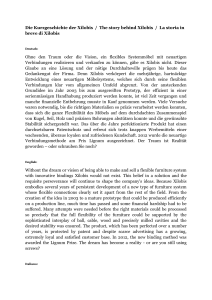
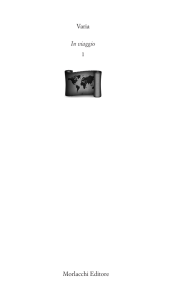
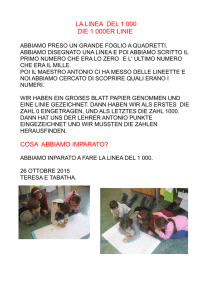
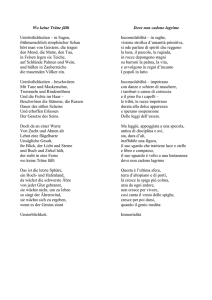
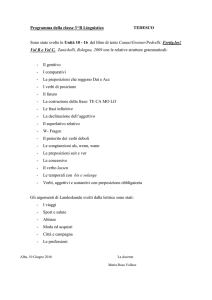
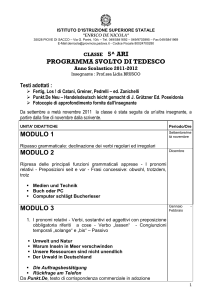
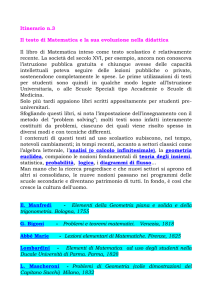
![Ricerca nr. 1 [MS WORD 395 KB]](http://s1.studylibit.com/store/data/000076742_1-2ede245e00e21c823e517529e1c3be46-300x300.png)
